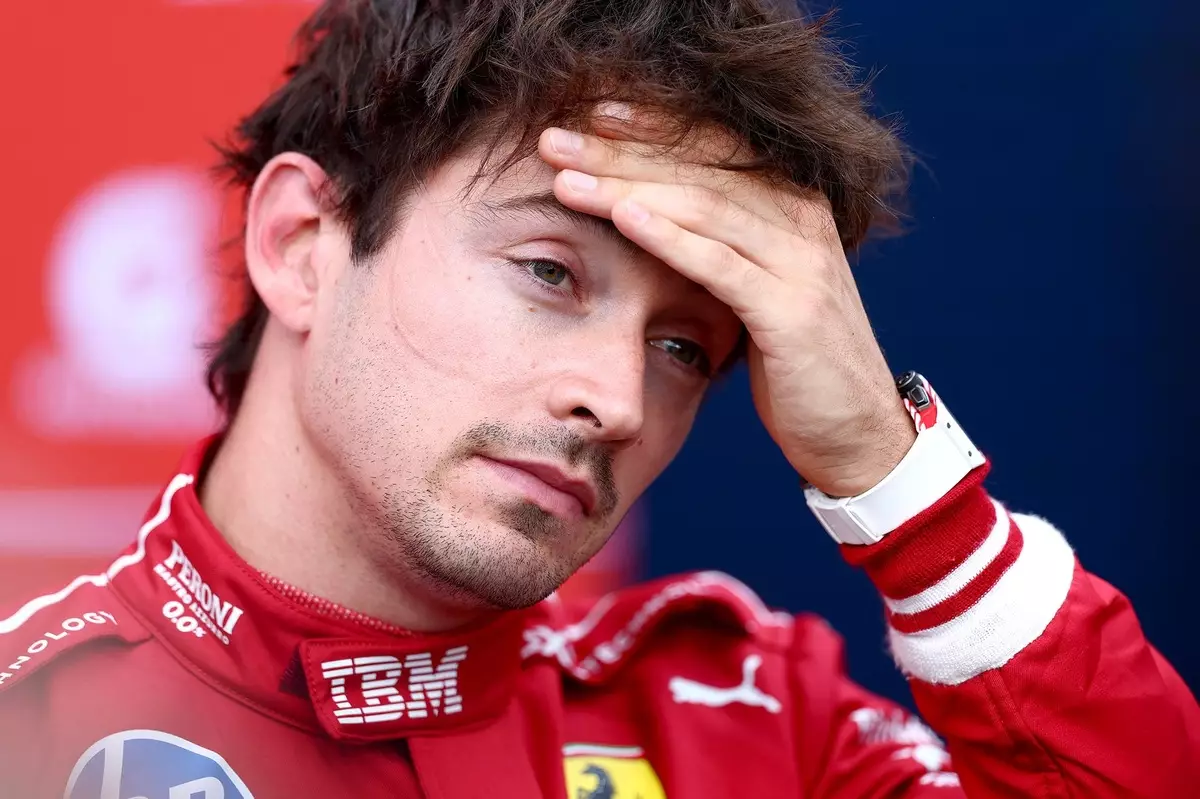Ferrari’s recent performances in Formula 1, exemplified by the Belgian Grand Prix sprint race, reveal a team caught in an endless cycle of fleeting heroics and profound disappointment. Despite the glamorous promise of an upgraded car, what emerges is a picture of stagnation disguised as progress. Charles Leclerc’s early success—climbing into third after a spirited first lap—arched with the hope that Ferrari could challenge the dominant Red Bulls and McLarens. Yet, that flicker of optimism quickly dimmed as the team’s true struggles surfaced: poor race pace, inability to capitalize on qualifying potential, and a car seemingly stuck in a development limbo.
The narrative of Ferrari’s recent upgrades—major revisions like underfloor changes and new rear suspension geometries—promises a revolution. However, in reality, these modifications resemble elaborate cosmetic fixes rather than fundamental breakthroughs. The subtlety of the performance gains is a stark reminder that Ferrari’s engineering effort has yet to translate into that commanding competitive edge. The team’s persistent struggle to stay within striking distance of Red Bull and McLaren underscores a deeper flaw: a lack of innovation that can meaningfully reshape the racing landscape in their favor.
This isn’t just about technological stagnation; it’s about the team’s inability to harness the power of their resources and talent effectively. The upgrades are often described as “positive” by drivers, but the tangible results remain elusive. For Ferrari, the challenge isn’t just pushing the car to its limits but reimagining their approach altogether—something they seem reluctant or unable to do amidst the weight of tradition and internal politics.
The Mirage of Upgrades and the Reality of Regression
In Formula 1, the narrative often champions upgrades as the path to supremacy, yet Ferrari’s recent experience paints a different picture. The upgrades at Spa—an entirely new underfloor and circuit-specific aerodynamic components—should have been a game-changer. Instead, they appear to be more akin to band-aids on a deep-rooted wound. The car’s performance remains inconsistent, and driver feedback oscillates between cautious optimism and outright frustration.
Even Lewis Hamilton, a veteran capable of extracting every ounce of performance from his machinery, struggled with the upgrades. His limited overtaking in a race marked by sluggishness highlights the wider systemic issue within the teams that rely heavily on upgrades to mask deficiencies. Hamilton’s comment about not spinning and moving forward modestly underscores the minimal gains even veteran drivers can typically leverage, suggesting Ferrari’s upgrades are not providing that much-needed competitive uplift.
Furthermore, the complexity of aerodynamic changes, often involving subtle modifications to tunnels and diffusers, raises questions about their effectiveness. It is tempting to view these modifications as part of a long-term strategy, but in the short term, they seem to do little to alter Ferrari’s positioning on the grid. Usually, big upgrades should generate visible leaps in performance—yet here, they seem to only sort the cosmetic from the essential.
The Psychological Toll and Leadership Challenges
It would be unfair to ignore the psychological impact that continuous underperformance inflicts on the team. Charles Leclerc’s candid remarks—admitting that the team isn’t fighting with Red Bull or McLaren—reflect a deeper morale issue. It’s not just about failing to attain podium finishes; it’s about a persistent sense of mediocrity, of being perpetually behind the curve with no clear path to closing the gap.
The internal dynamics within Ferrari’s technical department are also under strain. There is an air of skepticism about whether the current strategic approach—massively investing in upgrades with uncertain returns—is sustainable. This dilemma compounds stress across the team, affecting decision-making both on and off the track.
From the leadership standpoint, Ferrari must confront its inability to translate engineering effort into tangible results. The constant cycle of upgrades, optimistic announcements, and underwhelming performances suggests a disconnect between ambition and execution. Such disconnects threaten to further erode confidence not only in the technical team but in the strategic vision. With competitors continuously advancing, Ferrari risks falling further into irrelevance if it cannot evolve beyond piecemeal fixes.
The Courage to Reimagine Success
Ultimately, the core issue with Ferrari isn’t just about aerodynamics or chassis tuning; it’s about courage. Courage to abandon the comforting familiarity of incremental upgrades and to pursue radical innovation. Ferrari’s history is replete with moments where bold moves on the grid reshaped the sport—think of the legendary Ferrari victories that redefined racing. Today, facing an era dominated by Red Bull’s relentless pace, Ferrari’s reluctance to embrace revolutionary change holds them back.
They are caught in a cycle of false hope—believing that one more upgrade, one more tweak, will reignite their championship ambitions. But the harsh truth is that without a paradigm shift, Ferrari risks remaining a perennial underdog, eternally chasing shadows. To truly reclaim their former glory, they need to ask themselves whether their current approach is enough or if it’s simply delaying the inevitable decline of a storied racing dynasty that has yet to find its true direction again.


Leave a Reply